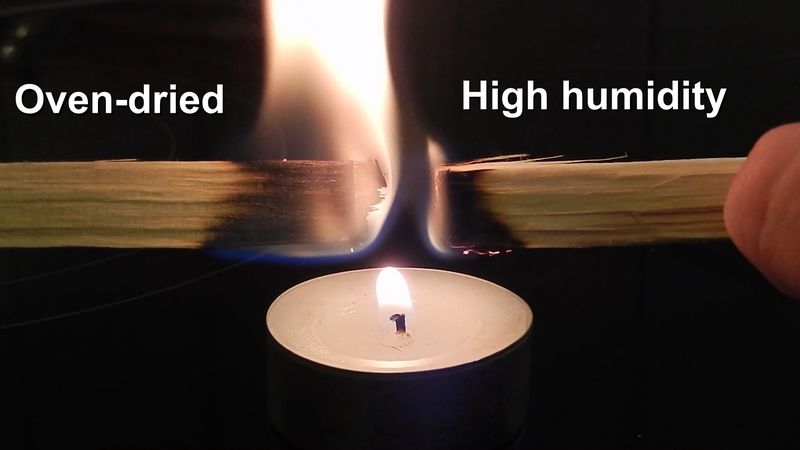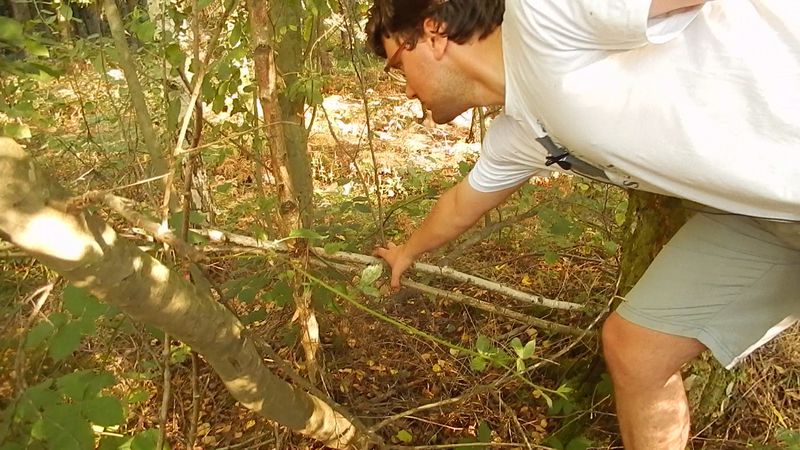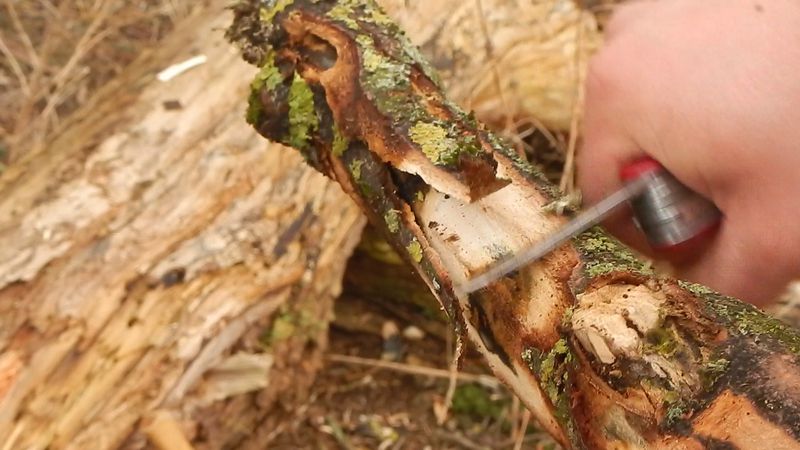Finding dry firewood
The FYRO Stove works best with dry wood. That guarantees fast start-up, high peak power and stable combustion even when you throttle it. This practical guide helps you find dry firewood even in moist conditions so that you can benefit the most from your FYRO Stove all year round.

Understanding the role of wood moisture


Wood can absorb a significant amount of humidity from the air without being noticeably wet. Up to 30 wt-% of water can be embedded in the molecular structure while the wood appears dry. When you try to ignite such a piece of wood that is saturated with moisture, it first draws a lot of heat and releases water vapor until it is completely dry. Only then does it catch fire.
Both effects – drawing heat and releasing water vapor – tend to extinguish the flames so that the fire starts to smolder and ultimately goes out. For that reason wood with the lowest possible moisture content is always preferred for a fire. Consequently, wood that feels noticeably moist, i.e. that even contains free capillary water on top of the embedded 30 wt-%, is entirely unsuitable as fuel.
For optimal results one should therefore learn to find firewood that not only feels dry, but on top of that has a low embedded moisture content.
Upright standing

Wood that is close to the ground takes up more moisture than wood that is upright and standing where the wind can dry it. Therefore you should always collect wood that is above the ground, for example wedged in a bush, or a dry and dead branch that you can break off.
In the sun

Prefer wood that is exposed to sun, for example from an edge of the wood that faces south (resp. north in the southern hemisphere). If it is cloudy or dark: Check with your compass or on your map which parts should be exposed to sun on a regular basis. Even if the sun is not shining at that very moment, the wood found in such places is generally drier than in dark, shady places.
Remove bark, moss and lichens

Bark, moss and lichens absorb far more water than the wood in the core. For that reason you should remove them from your firewood if you encounter difficulties to start or maintain your fire.
Small pieces in dry weather
If it has been moist for a longer time in the past and the weather is turning dry, you should prefer thin, light pieces that dry quickly. Shrubs might be dry after only a few hours in the sun, while thick pieces might take weeks to dry.
Large pieces in moist conditions
When you are looking for firewood in moist conditions, you should prefer thick pieces with dense wood. They might be moist on the outside, but the moisture takes a long time to reach the core so that they are still dry enough. If possible, you should split them because that exposes the dry core, and they catch fire more easily on sharp edges.
Watch our tutorial!
Watch our YouTube video that shows in practice how to find wood and tinder in the rain and how to cut and split large pieces with only a pocket knife!











